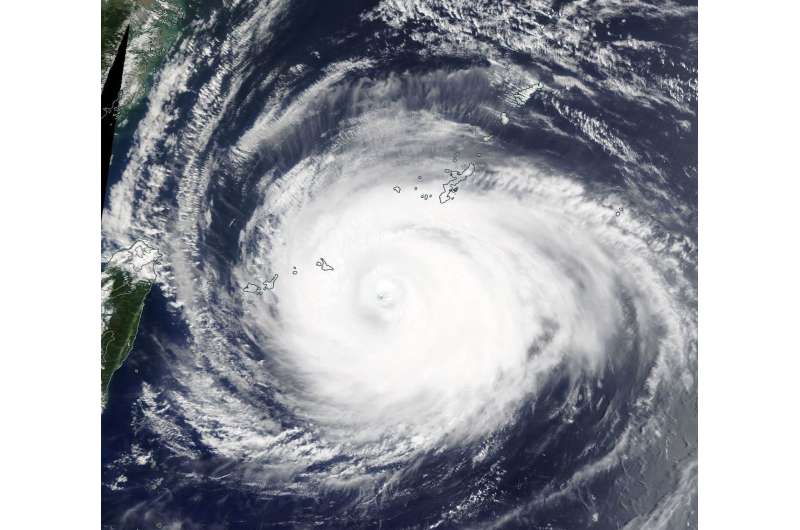NASA spots Typhoon Maria's ragged eyewall replacement

NASA's Terra satellite passed over the Northwestern Pacific Ocean early on July 10 and obtained a visible image of Typhoon Maria. Maria's eye appeared ragged and forecasters noted that the storm was experiencing eyewall replacement.
The MODIS or Moderate Resolution Imaging Spectroradiometer instrument aboard NASA's Terra satellite looked at Maria in visible light. The MODIS image showed a large, thick powerful band of thunderstorms continued to circle a ragged 30 nautical mile-wide eye. The ragged appearance of the eye is a signature of eyewall replacement.
During the eyewall replacement, which usually happens in major hurricanes (Category 3 or greater on the Saffir-Simpson Hurricane Wind Scale) where sustained winds are greater than 115 mph (185 kph), the smaller inner eyewall deteriorates and becomes replaced by a much larger outer eyewall.
At 5 a.m. EDT (0900 UTC) on July 10 the center of Typhoon Maria was located near latitude 24.6 degrees north and longitude 125.6 degrees west. That's about 165 nautical miles southwest of Kadena Air Base, Okinawa Island, Japan. Maximum sustained winds were down to 126.6 mph (110 knots / 203.7 kph). Maria was moving toward the west-northwest near 18.4 mph (16 knots/29.6 kph),
Maria is a big storm, and tropical storm-force winds extend about 380 nautical-miles wide.
Maria will continue to move northwest but and is continuing to weaken gradually as it moves toward Taiwan and China.
Provided by NASA's Goddard Space Flight Center




















